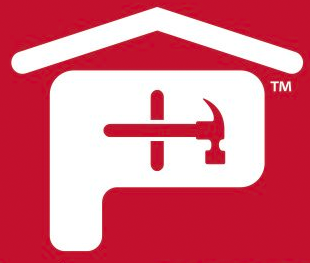Any roofing material – shingles, roll, tile, or metal - must be installed over a water-resistant membrane called underlayment. It is the unseen component of a roof system. But the protection it provides is essential to maintaining the overall integrity of a roof. It’s critically important to select a roofing underlayment that can endure the usage a roof will receive.
A roof system may have more than one type of underlayment. The three primary types of underlayment are asphalt-saturated felt, rubberized asphalt, and non-bitumen synthetic. Each offers varying types of protection. Functional needs are what should guide the decision making process. A reputable roofing contractor should be able to determine the best underlayment to use in each specific roofing project.
Protecting Your Home from Water Damage
Water is the enemy of all building materials. Waterproof underlayment prevents the passage of liquid water and water vapor. It is typically used on parts of the roof system that are more likely to leak, including penetrations in areas where roof-covering materials change or end, and low-slope sections of a roof.
Rubberized asphalt underlayment often comes with a selvedge edge along one side of each roll. That selvedge edge is designed to create a strong, watertight seal along the edges where rolls overlap. The selvedge edge should always be along the top edge when the underlayment is installed in courses across a roof.
Fungus and Sun Protection
A roof also needs protection from other dangerous enemies such as fungus, UV rays, and Mother Nature. Non-bitumen synthetic underlayment is resistant to fungal growth and, since it doesn’t absorb moisture, remains wrinkle-free. It is also lighter weight, high-strength, and typically non-skid. Synthetic Underlayment is typically referred to in two different distinctive categories. Synthetic underlayment is categorized as either heavyweight or lightweight. The difference between a heavyweight and lightweight is usually the synthetic underlayment's characteristic ratings for UV resistance and tear and tensile strength. These differences will determine the exposure time a synthetic underlayment can be exposed to the weather and Mother Nature before shingles are applied.
Underlayment Protection by Location
Geography also is a factor in the protection an underlayment can provide. An underlayment that works well beneath metal roofing in a hot, humid place such as Orlando, Florida, may not work as well beneath wood shakes in the cold, dry climate of Pierre, North Dakota. In addition to geographic factors, selecting a non-conventional type of roof-covering material may require a specialized type of underlayment. For example, slate or tile roofs must be protected by underlayment made specifically for those roofing products, and not one used with conventional shingles. To be certain, always check with the roofing material manufacturer for its recommendation on the preferred type of underlayment.
Protection from the Conditions
Roofing underlayment must also provide protection from wind damage. In high wind areas, felt should be attached using plastic caps. They offer better wind resistance and help prevent leakage through penetration holes made by fasteners.
Some roof installations may require an extremely strong underlayment if the roof will face a long exposure. For example, a job could have a long open time from the dry-in to when the roof covering is installed. In such a case, synthetic underlayment would be the preferred product.
Another crucial protection factor for homeowners is the roofing material fire rating. The use of certain roofing underlayment, along with proper decking materials, will help meet Class A and/or Class C fire ratings. An asphalt shingle by itself is not fire-rated.
Don’t Be Fooled by Sub-Standard Underlayment
Finally, protection is needed from sub-standard underlayment, so buyers beware. The most common reason roof underlayment may fail is poor quality. The American Society for Testing and Materials (ASTM) created a set of standards to help consumers make informed choices. It is important to purchase only underlayment that has the official ASTM rating label. Some manufacturers produce asphalt-saturated paper that is labeled “underlayment”, but is often saturated with a lower level of asphalt than an ASTM-compliant product. This inferior product will absorb water and can develop wrinkling as underlayment expands. Wrinkles negatively affect the shape of thinner shingles and the roof deck absorbs the water intrusion. This, in turn, can lead to serious damage to the roofing system.
The more homeowners understand about roofing components, the better they can make an informed decision that will protect their home. Underlayment is an essential component that allows a roof to withstand the elements, protect a home’s interior, and prolong its service life.



 Gear!
Gear! PRO LOGIN
PRO LOGIN